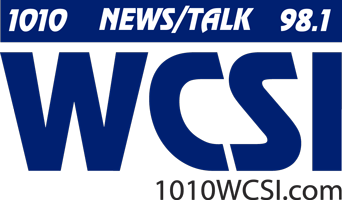The Drinks of my Youth…
Growing up in northern Ohio, I don’t have much recollection of what we drank outside of milk at meals.
Soft drinks didn’t really appear on the scene for me until the early 60’s.
I don’t recall “pop” in out house till I was in my teens.
“Soda” is what the “Easterners” drank.
Most times we’d get a glass of water from the kitchen or we’d sip from the backyard hose.
(It was then I learned to hate cheap, plastic garden hoses. Yuck! What a terrible taste!)
My friend Alan Berry had a neat water-fountain attachment on one of the outside spigots at their house.
It looked like something you’d see advertised in the back of a comic book right next to those neat x-ray glasses.
Mom made Kool-Aid with “evil” sugar added.
There was none of that carcinogenic artificial sweetener around then.
Cherry was always the favored flavor.
We did get to have “baygo” which was white milk, darkened and sweetened with Bosco.
Bosco Products Inc. was based in Towaco, New Jersey and the actual word “bosco” is Italian for someone living or working in a wood.
The William S. Scull Company, the parent firm was founded in 1831.
They made Boscul Coffee.
Bosco chocolate syrup was first produced in 1928 by an unknown physician and was originally called Bosco Milk Amplifier.
The Bosco my sisters and I used was advertised heavily on those kid shows in the late 50’s and early 60’s like Captain Penny and Barnaby.
“I Love Bosco!” was a popular advertising cry.
More than just sweetening and darkening our milk, Bosco was also used to make fake blood in Hitchcock’s “Psycho” shower scene.
Bosco also was used for the fake blood in the “Night of the Living Dead” movie.
Bosco was also mentioned or referred to in episodes of “Seinfeld”, “MASH”, “Night Court”, “The Sopranos” as well as “Laverne and Shirley”.
Eventually, Bosco was supplanted in our house by Nestle’s Quik.
In 1948, Nestle launched a powdered mix for chocolate-flavored milk.
Remember that big yellow and brown cardboard container with the shiny, metal top?
You had to used your spoon to pry it open and it often clattered on the floor if you were too eager.
Netles’s Quik boxes often claimed their product “mixes instantly in hot or cold milk”.
Well, sorta.
You had to spoon the brown powder into your milk and you often had little crunchy chocolate nodules floating on top.
I would try to mash them with my spoon against the side of my glass.
Sometimes we would put several scoops in a small bowl and add a little hot water to make a “syrup” to pour over ice cream.
On occasion, my parents would buy a bottle of chocolate milk from Isaly Dairy but I didn’t like it because it was too thick for my palate.
But in the 60’s, I discovered Mountain Dew.
The original formula was invented in Tennessee in 1940 by Barney and Ally Hartman.
These medical scientists were looking for a cure “for all diseases”when they happened upon Mountain Dew.
Mt. Dew was trademarked for the citrus-flavored and caffeinated beverage in 1948.
It’s interesting to note that while Pepsico now owns Mt. Dew, the original owners asked Coca-Cola if they had any interest in the drink.
They refused.
The original 10 ounce green glass bottles that Mt, Dew came in had “Willy the Hillbilly” firing a long gun an a character running by an outhouse in the distance.
We were told “It’ll tickle your innards”.
A white square on the lower right from of the bottle advised us in red letters that our Mountain Dew was “Made from flavors specially blended in the traditional hillbilly style”.
As a kid, we’d frequent Johnny’s Foodbasket” on Ashland Road.
We’d buy a snack (I usually bought a Hostess Snoball).
I’d also grab a Mountain Dew in a dangerous glass bottle from the vending machine.
We’d all retire to the double billboards at Eastview Drive and Ashland Road to read the latest Mad Magazine and enjoy our treats.
About the same time, the Ohio-based Cotton Club Bottling Company came out with its’ own drink to compete against Mountain Dew.
“Hillbilly Joose” had that “Hug-a-Jug flavor worth feudin’ and fightin’ for”.
On those occasions when the “Dew” line in the vending machine was sold out, I’d settle for a little Hillbilly Joose.
When I was stationed in Greenland in 1972, I had cans of Mountain Dew shipped to me by my family because the USAF didn’t stock it at the commissary.
My Pineville, Kentucky roommate had a similar liking for Peach Nehi and would get occasional care packages from home with his drink of choice.
Much later, when Mt. Dew came out with a diet version, I remember driving great distances to get a couple of six-pack cans.
I still occasionally sip a Mt. Dew, or Dew as it is currently marketed.
I’ve even tried the original stuff that shows up from time to time in stores in the retro-packaging.
These days, I often “wet my whistle” with something other than “baygo” or Mountain Dew.
But, “back in the day”, we had fewer choices.
Somehow I survived.
